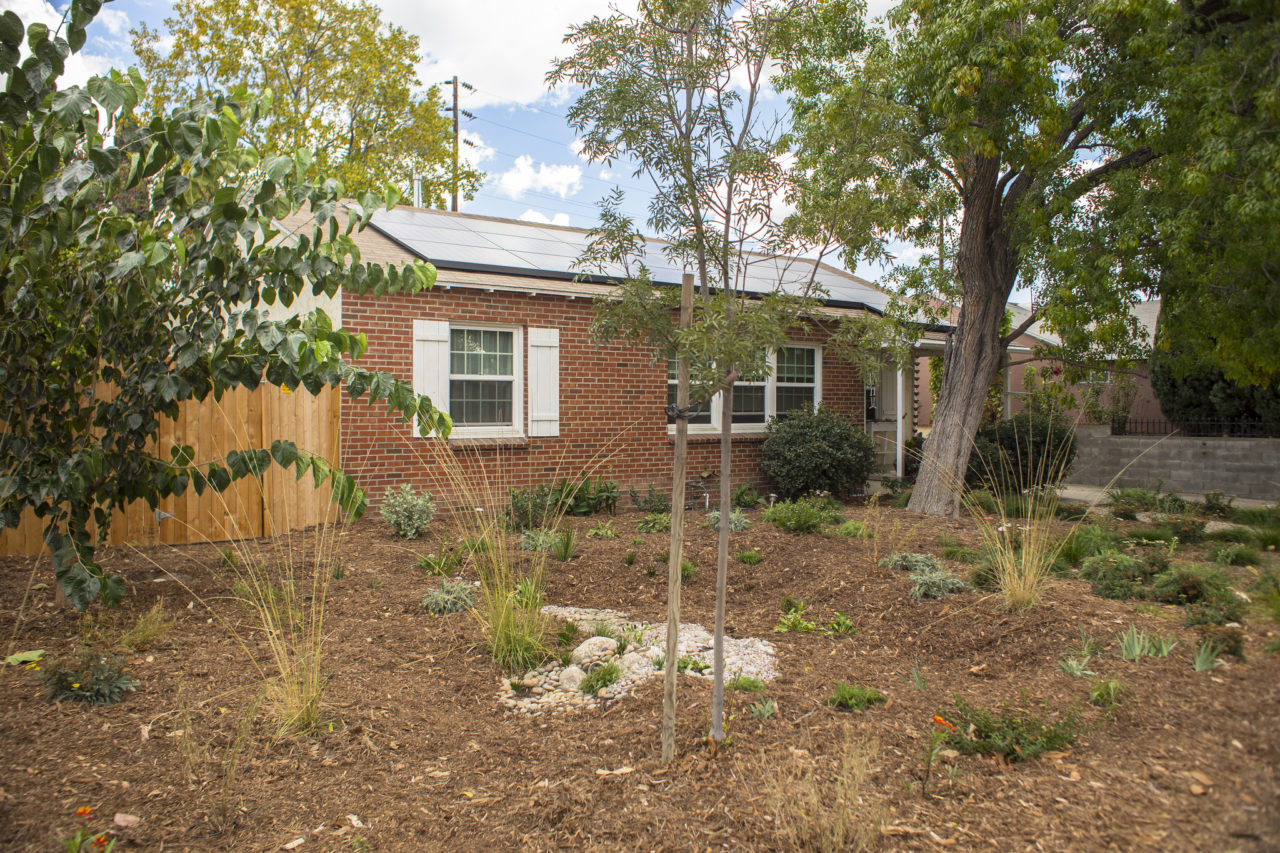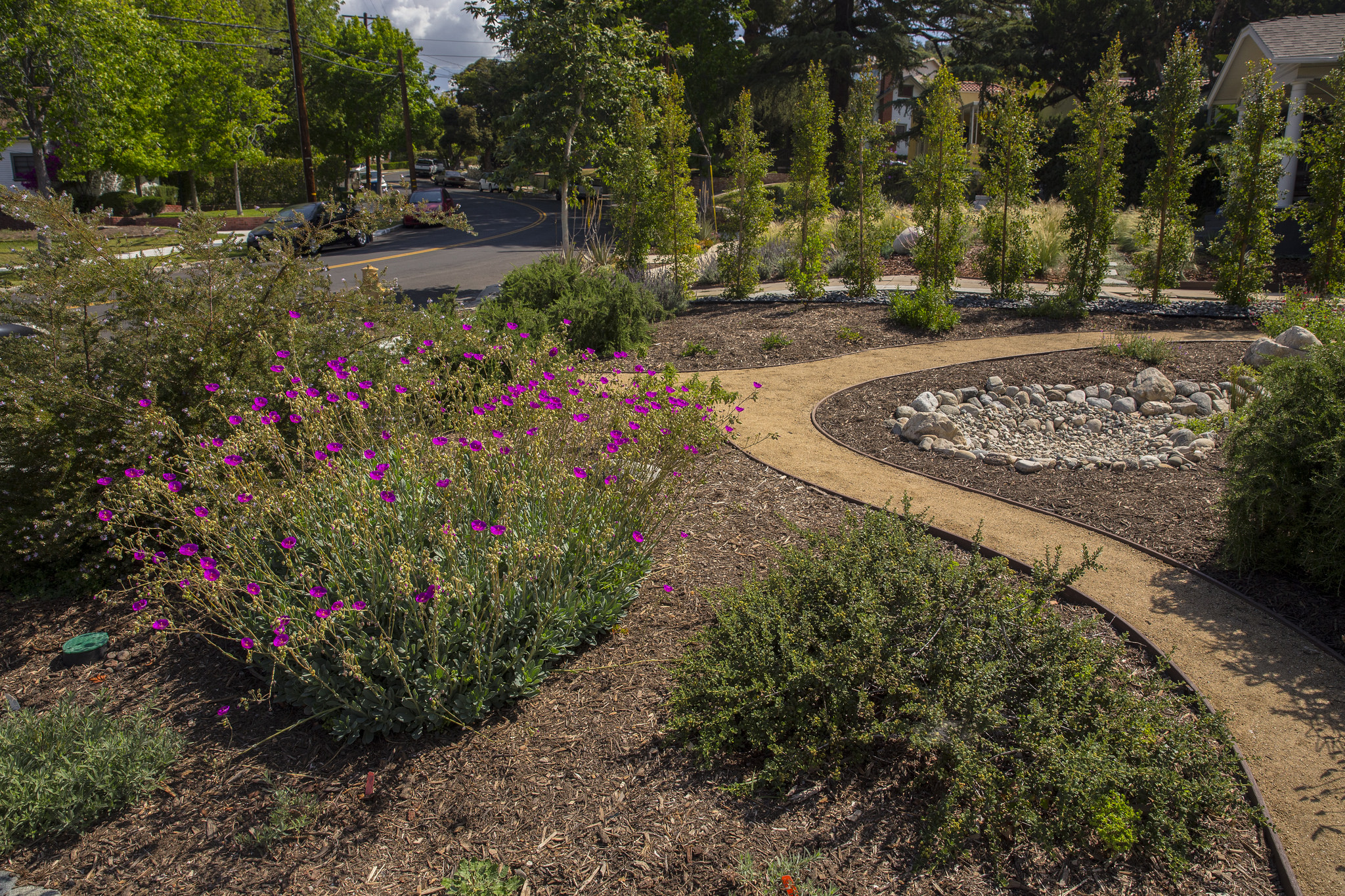Los Angeles is a very unique place with complex challenges when it comes to both water and climate. Moving toward a more climate-resilient LA is a complicated task with a multitude of paths towards a solution. Looking further into how water is used, either through landscape transformations or how water use will affect local temperatures in the future are a step in the right direction for LA. Thankfully, a study by Professor George Ban-Weiss from the USC Viterbi School of Engineering about how changing from traditional lawns to drought tolerant landscape could have an effect on temperatures in LA has been released to assess if changing to drought tolerant landscaping will change temperatures in LA. However, due to the intricacies of modeling and many variables involved this study focused on only a few basic scenarios.
The study by Ban-Weiss looks at two different landscape transformation scenarios and modeling existing conditions, for both of the scenarios irrigation was stopped completely in transformed landscapes. The first scenario was changing all residential lawns in LA out with drought tolerant landscaping. The second scenario involved changing all vegetated landscape throughout LA to drought tolerant landscaping. The control scenario reflected the average conditions in LA where trees cover roughly two-thirds of the pervious landscape with the remainder as lawns and bare soil.The main variables that could account for changes in temperature is evapotranspiration: the process by which water is transferred from land to the atmosphere by evaporation from the soil and other surfaces and by transpiration from plants. Another key item to note is that irrigation causes a change in the thermodynamic properties of the soil, meaning that when plants and soil are watered additional heat gets trapped in the soil during the day and the soil holds on to that heat for longer during night time (think of how quickly it gets cold at night in the desert). The overall findings of the study are discussed below:
- Night time cooling plays an important role– According to the scenarios where all lawns and/or all vegetation was transformed to drought tolerant landscaping the nighttime temperature would have a mean cooling of 5.5 to 5.8 degrees fahrenheit at night as opposed to the day time warming of 1.6 degree F. The study says that higher levels of cooling at night will allow people to cool down and recover before exposure to the next day’s high temperatures. Therefore the anticipated cooling benefits of drought tolerant landscape transformation far outweigh the drawbacks.
- The scenario matters-The study focused on transforming all lawns and/or all vegetation including trees into drought tolerant landscaping; it is not realistic for LA to cut down all of its trees and remove all of the grass therefore the realistic warming would likely be less than the scenarios presented. Additional research on if the trees remained and only lawn was transformed is needed.
- The power of trees– Though not directly a part of the study planting a tree near a building results in significant cooling due to shade and evapotranspiration. Planting trees would offset at least some of the loss of daytime cooling from transforming a lawn into a drought tolerant landscape while also offering a number of other benefits. TreePeople participates in tree plantings throughout LA, feel free to sign up to join us here.
TreePeople is an advocate of creating a climate resilient LA by using water wisely on landscapes by transforming lawns into drought tolerant landscapes and also planting and watering trees. TreePeople is also investigating the possible impacts of increasing urban heat due to climate change on communities throughout Los Angeles. We view all of these priorities as being essential components of a vibrant, sustainable, climate-resilient LA — however, there are many complexities in balancing water use for landscaping and the urban forest, reducing urban heat impacts, and conserving water for other uses. TreePeople looks forward to continually assessing best practices for a more climate resilient LA.


